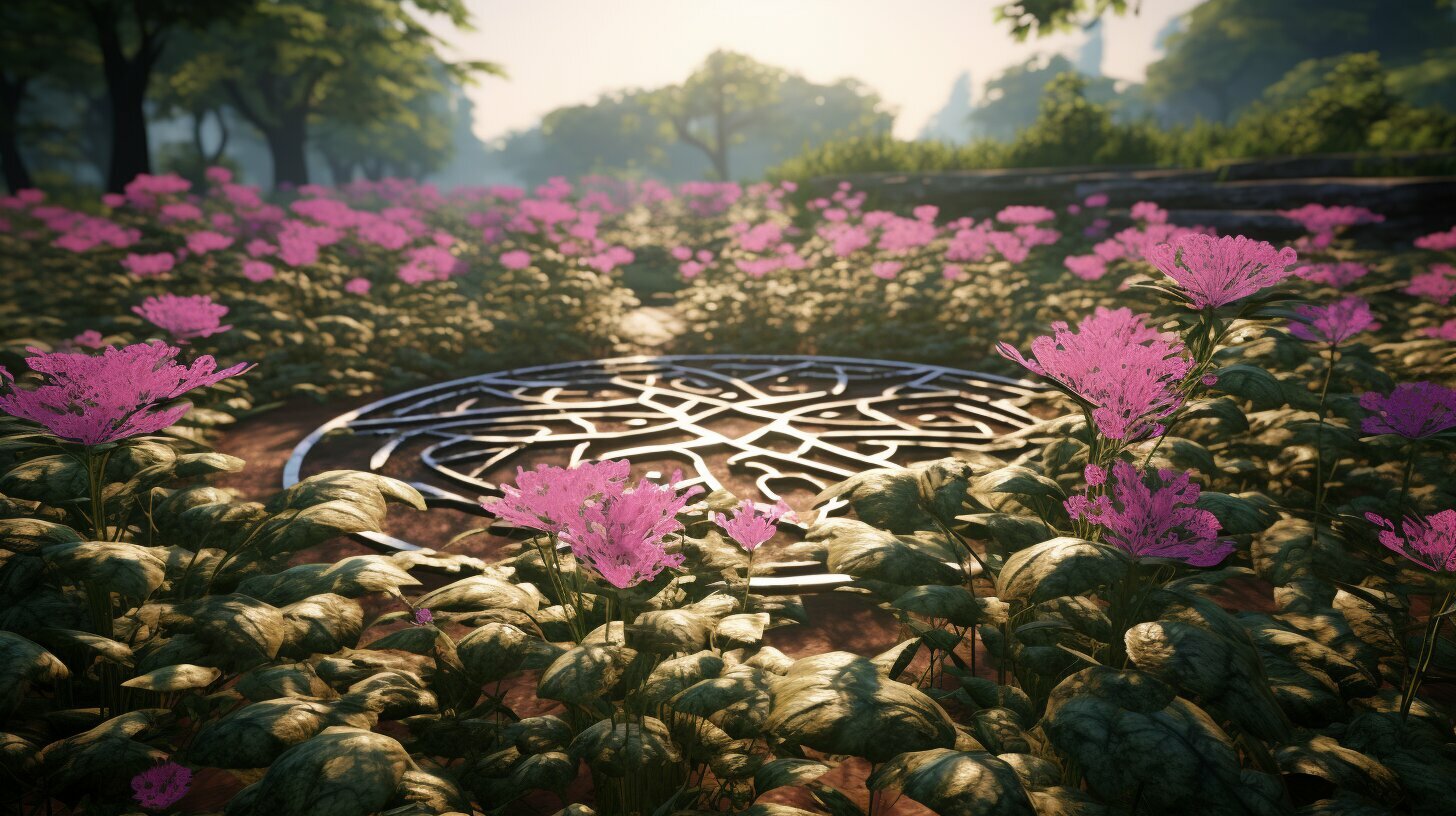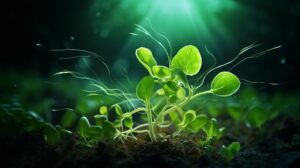How Plants Make Their Own Food. Plants are nature’s magicians, as they have the incredible ability to create their food through a process called photosynthesis. This process is vital for a plant’s growth and survival, and it’s all thanks to the chloroplasts found in their cells. These organelles are responsible for capturing and converting light energy into chemical energy, which is then transformed into glucose, the primary energy source for plants.
Autotrophic nutrition is the term used to describe the process of self-feeding that plants use to survive. Unlike animals, which rely on consuming other living things to obtain energy, plants make their food using only sunlight, carbon dioxide, and water.
Join us as we delve into the world of photosynthesis and explore the steps involved in how plants make their food.
Key Takeaways
- Photosynthesis is the process by which plants create their food through the conversion of sunlight to glucose.
- Autotrophic nutrition is the term used to describe the self-feeding process of plants.
- The chloroplast is the organelle responsible for photosynthesis within plants.
- Plants utilize light-dependent reactions and the Calvin cycle to transform light energy into glucose.
- Carbon dioxide and water are essential components for photosynthesis to occur.
The Powerhouse Within: Chloroplast Function
Have you ever wondered how plants produce their own food? The answer lies in the fascinating process of photosynthesis, which occurs within the chloroplasts present in plant cells. These tiny organelles are responsible for converting carbon dioxide and water into glucose, the energy source for plants. Let’s explore how chloroplasts function and their vital role in plant metabolism.
Chloroplasts are incredibly complex structures that contain their DNA and a system of internal membranes arranged in stacks known as grana. These membranes contain the pigments chlorophyll and carotenoids that capture light energy and turn it into chemical energy that plants can use to make food.
The process of photosynthesis begins when light energy is absorbed by chlorophyll, which triggers a series of chemical reactions known as light-dependent reactions. These reactions occur in the thylakoid membranes and result in the production of ATP, a molecule that stores energy. The ATP produced during the light-dependent reactions is then used in the second phase of photosynthesis, the Calvin cycle.
The Calvin cycle takes place in the stroma, the fluid-filled space that surrounds the thylakoid membranes. During the Calvin cycle, carbon dioxide is absorbed from the air and combined with the stored energy from ATP to produce glucose. This remarkable process is essential for plant survival, as glucose is used to fuel various metabolic processes that drive growth and development.
In summary, chloroplasts play a critical role in plant metabolism, allowing plants to produce their own food through photosynthesis. The combined efforts of the chlorophyll and carotenoids within the thylakoid membranes and the complex chemical reactions that occur within the stroma, make the process of photosynthesis possible.
Light-Dependent Reactions: Harnessing Solar Energy
Now that you understand the role of chloroplasts in plant metabolism, let’s dive deeper into the process of photosynthesis. During the light-dependent reactions, plants capture solar energy and convert it into chemical energy, which is then used in the next stage of photosynthesis, the Calvin cycle.
In these reactions, pigments such as chlorophyll absorb light energy, which is then transferred through a series of molecules in the thylakoid membrane. This energy is used to create a proton gradient, which is essential for the production of adenosine triphosphate (ATP), the energy currency of the cell. Similarly, water molecules are also split during this stage, releasing oxygen as a byproduct.
Overall, the light-dependent reactions set the foundation for glucose synthesis in plants by generating chemical energy and oxygen. These reactions are an essential component in the process of how plants make their own food, ultimately enabling them to contribute to the balance of our ecosystem.
The Calvin Cycle: Transforming Light Energy into Glucose
Now that you understand the light-dependent reactions, it’s time to explore the second stage of photosynthesis: the Calvin cycle. This vital process takes place within the chloroplasts of plant cells and is responsible for synthesizing glucose from carbon dioxide.
The Calvin cycle is a complex process that involves a series of enzymatic reactions. The first step of the cycle involves CO2 fixation. This is where carbon dioxide molecules are converted into an organic molecule that can be used by the plant. The enzyme responsible for this reaction is called Rubisco, and it is one of the most abundant proteins on Earth.
Once the CO2 is fixed, the cycle moves into the reduction phase, where energy from ATP and NADPH (which were generated in the light-dependent reactions) is used to convert the fixed CO2 into glucose. The glucose molecules can then be used by the plant for energy or stored for later use.
While the Calvin cycle is a vital part of the photosynthesis process, it is not always efficient. In fact, Rubisco is often considered a bottleneck in the process, as it can be slow and prone to errors. However, many plants have evolved ways to optimize the cycle and maximize their energy production.
Overall, the Calvin cycle is a crucial stage of photosynthesis, as it converts the energy from light-dependent reactions into a usable energy source for the plant. By synthesizing glucose, plants are able to fuel their growth and survival, making photosynthesis one of the most essential processes on Earth.
Utilization of Carbon Dioxide and Water
Did you know that plants absorb carbon dioxide and water during photosynthesis? This process is essential to their survival and growth. But how do plants efficiently utilize these components?
Let’s start with carbon dioxide. Through small pores called stomata in their leaves, plants absorb carbon dioxide from the air. This carbon dioxide then enters the chloroplasts, where it is combined with other molecules to produce glucose in the Calvin cycle.
As for water, plants absorb it through their roots. The water travels up through the stem and into the leaves, where it is converted into oxygen and hydrogen ions during the light-dependent reactions. The oxygen is then released back into the air, while the hydrogen ions are used to produce ATP, a crucial energy source for plants.
Overall, the efficient utilization of carbon dioxide and water is essential to the photosynthesis process. Without these components, plants would not be able to produce the glucose they need to survive and grow.
Glucose Synthesis: Fueling Plant Growth
Now that we have explored the vital role of chloroplasts and understood the intricate mechanisms of light-dependent reactions and the Calvin cycle, it’s time to delve into the final stage of photosynthesis: glucose synthesis.
Glucose synthesis is the process by which plants use the products of the light-dependent reactions to synthesize glucose, the primary energy source for plant growth and metabolic processes. This glucose is then stored in different parts of the plant, such as leaves, stem, and roots, to be utilized as needed.
The enzymes involved in glucose synthesis play a critical role in the process, controlling the chemical reactions required to convert carbon dioxide and water into glucose. The glucose produced is then transported to different parts of the plant, where it is required for various metabolic processes, including respiration, growth, and reproduction.
Glucose synthesis is not only vital for plant growth and survival, but it also plays a crucial role in our ecosystem. Plants are the primary producers of glucose, and they are responsible for maintaining the delicate balance of oxygen and carbon dioxide in our atmosphere.
Understanding the process of glucose synthesis is essential for those in agriculture, horticulture, and forestry. By gaining a deeper understanding of the mechanisms involved in this process, they can improve crop yield and quality, leading to more sustainable agricultural practices.
In conclusion, glucose synthesis is a vital stage of photosynthesis, enabling plants to produce their own food and fuel their growth. By understanding this process, we gain a greater appreciation for the crucial role plants play in our ecosystem and the sustainability of our planet.
Conclusion
Now that you have uncovered the mystery of how plants make their own food, you can appreciate the incredible process of photosynthesis. This autotrophic nutrition process allows plants to harness the power of the sun and convert it into glucose, a vital source of energy.
Chloroplasts play a crucial role in plant metabolism by conducting photosynthesis, which ultimately leads to glucose synthesis. The light-dependent reactions harness solar energy, and the Calvin cycle transforms it into glucose.
Plants efficiently utilize carbon dioxide and water during photosynthesis, and glucose synthesis fuels their growth and survival. By understanding this remarkable process, you can gain a deeper appreciation for the green wonders around us and the vital role they play in our ecosystem.
In summary, photosynthesis is a fascinating and essential process for all living things, and now you know how plants make their own food.
FAQ
Q: How do plants make their own food?
A: Plants make their own food through a process called photosynthesis. They utilize sunlight, carbon dioxide, and water to produce glucose, the energy source for plants.
Q: What is photosynthesis?
A: Photosynthesis is the process by which plants convert sunlight, carbon dioxide, and water into glucose, releasing oxygen as a byproduct. It is a crucial process for plant survival and plays a vital role in Earth’s ecosystem.
Q: What is autotrophic nutrition?
A: Autotrophic nutrition refers to the ability of plants to produce their own food through photosynthesis. Unlike animals, which rely on consuming other organisms for nutrition, plants can synthesize their own energy source using sunlight, water, and carbon dioxide.
Q: What is the role of chloroplasts in photosynthesis?
A: Chloroplasts are responsible for photosynthesis in plants. These specialized organelles contain chlorophyll, a pigment that captures sunlight. Chloroplasts convert light energy into chemical energy through a series of reactions, ultimately producing glucose.
Q: What are light-dependent reactions?
A: Light-dependent reactions are the initial stages of photosynthesis, occurring within the chloroplasts. These reactions capture solar energy and convert it into chemical energy, which is used in subsequent steps to produce glucose.
Q: What is the Calvin cycle?
A: The Calvin cycle is the second phase of photosynthesis, where plants use the products of light-dependent reactions to convert carbon dioxide into glucose. This cycle plays a critical role in glucose synthesis and provides plants with the energy they need to grow.
Q: How do plants utilize carbon dioxide and water during photosynthesis?
A: Plants efficiently absorb carbon dioxide through tiny openings called stomata on their leaves. Water is absorbed through the plant’s roots and transported to the leaves. These essential components are then used in the process of photosynthesis to produce glucose.
Q: How does glucose synthesis fuel plant growth?
A: Glucose synthesis is a vital process that fuels plant growth. Plants store glucose in various forms and utilize it for metabolic processes like cellular respiration, building new plant tissues, and producing fruits and seeds. Glucose serves as the primary energy source for plant growth and development.





Pingback: Discover What Plants Attract Butterflies in Your Garden - Botanic Plant Life
Pingback: Unraveling the Mystery: Can Plants Get Cancer?